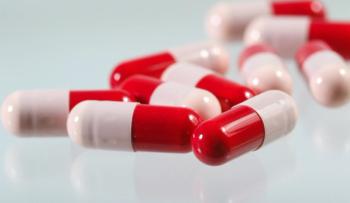
Schizophrenia Research Roundup: June 7, 2024
What is new in research on schizophrenia?
In this Research Roundup, we explore new studies on cognitive impairment and negative symptoms associated with schizophrenia, as well as related ketamine-induced reductions in DISC1 and axonal growth.
Cognitive Characteristics of Individuals With Negative Symptom-Dominant Psychosis
This large-scale, cross-sectional study of 788 drug-naive patients with first-episode psychosis (FEP) (median age 22 years; 50.6% men) explored cognitive characteristics in those with negative symptom-dominant (NSD) psychosis. Patients with NSD exhibited significantly greater cognitive impairments compared with those with positive (PSD) or general symptom-dominant (GSD) psychosis, particularly in processing speed and attention domains (eg, Trail Making [F = 4.410, P = .01], Symbol Coding [F = 4.957, P = .007]).
Cognitive impairment was positively associated with the severity of negative symptoms, with tests like the Brief Assessment of Cognition in Schizophrenia symbol coding showing significant differences (χ2 = 9.765, P = .002). The investigators concluded that, “The findings of this cross-sectional study of patients with FEP suggest the presence of a clinical subtype characterized by a predominance of negative symptoms and cognitive impairment.”
Reference
Zhang T, Wei Y, Tang X, et al.
Distinct Gut Microbiota in Young Adults With Negative Symptom-Dominant Schizophrenia
This study analyzed gut microbiota in 30 young adults with schizophrenia and prominent negative symptoms (SCH-N), 32 with prominent positive symptoms (SCH-P), and 36 healthy controls. Significant differences in β-diversity, but not α-diversity, were found among the groups. SCH-N patients had higher levels of Fusobacteria and Proteobacteria, and lower levels of Firmicutes compared with healthy controls.
A diagnostic panel of 6 genera could distinguish SCH-N from healthy controls with an area under the curve of 0.939, although differences between SCH-N and SCH-P were less pronounced, indicating that gut microbiota composition changes in patients with SCH-N. The investigators concluded that, “The composition of gut microbiota was changed in the patients with SCH-N, which may help in further understanding of pathogenesis in young adults with SCH-N.”
Reference
Chen YH, Yu H, Xue F, et al.
Ketamine-Induced Reductions in DISC1 and Axonal Growth: Implications for Schizophrenia
This study investigated the effects of ketamine on DISC1 and GSK-3β expression in postnatal day 7 rat pups. Ketamine administration reduced DISC1 levels and phosphorylated GSK-3β in a dose- and time-dependent manner, indicating increased GSK-3β activity. Lithium, a non-specific GSK-3β antagonist, significantly attenuated these ketamine-induced reductions in DISC1 levels and co-immunoprecipitation of DISC1 with GSK-3β. Ketamine also decreased axonal length—an effect reversed by lithium.
“These findings confirmed that acute administration of ketamine decreases in DISC1 levels and axonal growth. Lithium reversed this effect,” the investigators concluded. “This interaction provides a link between DISC1 and ketamine-induced neurodegeneration.”
Reference
Liu JR, Han XH, Yuki K, Soriano SG.
Let us hear from you! Want to share your insights with colleagues on the latest research on schizophrenia or other psychiatric disorders, treatments, and issues? Write to us at
Newsletter
Receive trusted psychiatric news, expert analysis, and clinical insights — subscribe today to support your practice and your patients.














